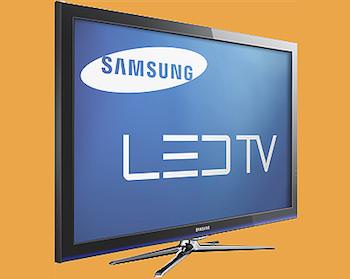- MENU
- HOME
- SEARCH
- WORLD
- MAIN
- AFRICA
- ASIA
- BALKANS
- EUROPE
- LATIN AMERICA
- MIDDLE EAST
- United Kingdom
- United States
- Argentina
- Australia
- Austria
- Benelux
- Brazil
- Canada
- China
- France
- Germany
- Greece
- Hungary
- India
- Indonesia
- Ireland
- Israel
- Italy
- Japan
- Korea
- Mexico
- New Zealand
- Pakistan
- Philippines
- Poland
- Russia
- South Africa
- Spain
- Taiwan
- Turkey
- USA
- BUSINESS
- WEALTH
- STOCKS
- TECH
- HEALTH
- LIFESTYLE
- ENTERTAINMENT
- SPORTS
- RSS
- iHaveNet.com
Tim Jarvis

“Because of the lack of existing 3-D content, there hasn’t been a huge demand from our customers for 3-D systems over the last few months,” says President Richard Berrie of Simple Solutions Digital Entertainment in Boca Raton, Fla. “But if you want to dip your toe in the water, Samsung has a 50-inch 3-D plasma that you can buy for under $1,000.”
Since 3-D sets have struggled to attract buyers over the last year, manufacturers have slashed prices -- so there are great package deals available. Best Buy is currently offering a 55-inch, 3-D-ready Samsung plasma with a Blu-ray player, two pairs of glasses, the first three Shrek movies, and a wireless adapter for $2,199.96.
If that sounds good, it gets better. It may be even less expensive to buy the components separately. You can buy the Sony 3-D Wi-Fi-ready Blu-ray player for $134.99, along with two pairs of Samsung 3-D glasses at $149.99 each, for the $1,000 Samsung television. If you can stand to live without Shrek and the adapter, you’ll walk away with a 3-D system for less than $1,500. Just be careful when you mix and match brands. (Sony glasses for example, won’t work with a Samsung TV.)
Despite its ever-increasing affordability, 3-D TV technology has hit an adoption roadblock. “Our customers have asked us to tell them when it’s time to switch, but I’m recommending that this is a time to wait and see,” says Berrie. Clearly, there are several issues working against the conversion to mainstream 3-D TV:
Less-than-adorable glasses are a hassle to wear, and they’re not exactly cheap. (Toshiba just launched the first glasses-free 3-D TV in Japan, so this may not be a problem for long.)
Content continues to be sparse.
Says Keith Willis, an engineer and the CEO and co-founder of Innovative Theatres Inc. in Hollywood, Calif.: “As for content, most of it is aimed at the under-’30s demographic. The older you get, the less you care about the effects -- and the more you want to be moved by the story.”
Fast-sequence symptoms
may be caused by 3-D effects, which tend to work better in slower sequences. “When there’s a lot of fast action, the brain has problems absorbing everything at once, and some people can suffer headaches and fatigue,” he says.
Still, 3-D will be incorporated into your home-entertainment devices over the next few years, as 2-D-only options go the way of Lebron’s popularity in Cleveland. The question is: Are people willing to pay a premium for new technology that, at least for now, appears to be more about hype than substance?
Tim Jarvis is a freelance health, technology and entertainment writer who contributes to O, The Oprah Magazine and the men's grooming and lifestyle site Men's Life Today. He is also currently working on a book about the mysteries of quantum mechanics.